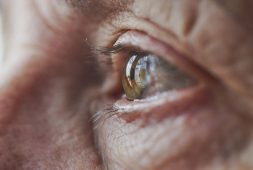
A recent study suggests that the regulation of circadian rhythm, the body’s internal clock, is linked to the hypothalamus region of the brain, which is also believed to be associated with migraine and cluster headaches. The study indicates that these debilitating attacks are more likely to occur during specific times of the day and certain seasons.
Individuals who experience migraine and cluster headaches often face unexpected and intense symptoms that disrupt their daily lives. However, the findings of this study provide new insights into the potential timing of these severe headaches.
According to research published on March 29 in the journal Neurology, migraine attacks are more prevalent during daylight hours, with individuals experiencing more severe symptoms between April and October. On the other hand, cluster headaches are more likely to occur during the night and are more frequent in the spring and fall seasons.
“Cluster headache is well-known among headache specialists to have a very precise daily cycle, so we weren’t too surprised to find strong connections with the biological clock,” said senior study author, Mark Burish, MD, PhD. He is an associate professor and the director of the Will Erwin Headache Research Center at the UT Health Houston McGovern Medical School.
“Migraine, however, is not thought of the same way,” Dr. Burish added. “We were surprised to find that migraine has such strong circadian connections.”
The Possible Circadian Genetic Connection to Migraine and Cluster Headaches
The internal biological clock, known as the circadian rhythm, regulates various bodily functions such as sleep, digestion, and temperature regulation. It is believed that activity in the hypothalamus region of the brain is involved in both controlling the circadian rhythm and triggering migraine attacks and cluster headaches, as stated by Burish.
In a recent analysis, scientists examined data from 72 previously published studies that investigated the potential influence of the circadian rhythm on the occurrence of migraine attacks or cluster headaches. These studies provided information regarding the time of year or time of day when participants experienced these intense headaches.
Furthermore, these studies explored whether certain genes associated with circadian rhythm function were more prevalent in individuals who suffer from migraine attacks or cluster headaches. The researchers discovered that out of nine genes linked to cluster headaches, five also played a role in circadian rhythms. Additionally, they identified 100 genes related to migraines that were also associated with circadian rhythms.
Migraine and Cluster Headaches May Wreak Havoc to Hormones Linked to Circadian Rhythm
The researchers examined the interplay between hormone production, intense headaches, and the body’s internal timekeeping system. Within this context, the hypothalamus, serving as the central control center for circadian rhythms, plays a role in regulating the synthesis of two hormones: cortisol, which signifies wakefulness and attentiveness, and melatonin, which indicates the onset of sleep.
The analysis revealed that individuals suffering from both migraine and cluster headaches tend to exhibit reduced levels of melatonin. Additionally, those with cluster headaches demonstrated elevated levels of cortisol.
“When people have migraine or cluster headache, their body’s clock can get messed up, causing changes in the hormones that help control sleep and wakefulness,” said Lauren Natbony, MD. She is the medical director of Integrative Headache Medicine of New York as well as an assistant clinical professor of neurology at the Icahn School of Medicine at Mount Sinai.
“So, if you have migraine or cluster headache, your body’s internal clock might not be working the way it should be, which can affect your sleep and pain levels,” Dr. Natbony also said. It must be noted that she wasn’t part of the latest analysis made.
The new analysis has a limitation: researchers did not have data on certain factors that could potentially influence circadian rhythms. These factors include whether individuals were taking medications that could affect sleep, whether they worked shift schedules that could disrupt their biological clocks, or whether they had underlying medical conditions that could contribute to circadian rhythm issues.
Nevertheless, the findings suggest that gaining a better understanding of the relationship between circadian rhythms and severe headaches could assist patients in adjusting their sleep patterns and medication timing to minimize symptoms. Dr. Nada Hindiyeh, the director of headache medicine at the Metrodora Clinic in West Valley City, Utah, emphasizes the potential benefits of this understanding.
Dr. Hindiyeh, who was not involved in the new analysis, asserts that further research is necessary to provide guidance for treatment adjustments based on the connection between severe headaches and circadian rhythms. “However, it is possible that taking medication at specific times of the day to coincide with the body’s natural rhythms may be helpful in preventing or treating attacks.”
Meanwhile, the partner site Migraine Again offers well-established strategies for effectively managing morning migraine attacks.



